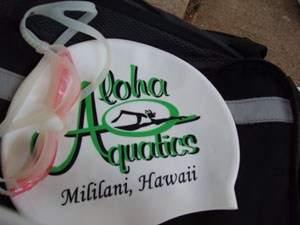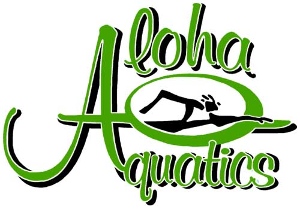For training purposes, swimmers are divided into Five groups:
Green:
Beginning swimmers who can demonstrate basic swimming ability and competency in at least two (2) of the four (4) strokes (freestyle/front crawl, backstroke/back crawl, breaststroke, & butterfly) and are new to competitive swimming. Focus is on developing basic stroke technique, conditioning, and refinement of strokes not yet fully proficient.
Bronze:
Beginning swimmers who can demonstrate basic swimming ability and competency in the four (4) strokes (freestyle/front crawl, backstroke/back crawl, breaststroke, & butterfly) but are new to competitive swimming. Focus is on developing basic stroke technique and conditioning. Goals are to gain the skills necessary to begin competing in meets. This group also includes advanced beginner swimmers who are building endurance and improving technique in all four strokes. They regularly compete at the A, B and C level.
Silver:
Strong intermediate swimmers who are building endurance and improving technique in all four strokes, starts, and turns. Dryland training is introduced. They regularly compete at the A, B and C level.
Gold:
Competitive swimmers who continue to increase their aerobic base and conditioning, refine their skills, and focus on race strategy. Their goal is to compete in invitational meets.
Juniors:
Advanced swimmers who are committed to competing at an elite level, can handle the rigors of demanding aerobic workouts, and continue to perfect their technique and race strategy. Their goal is to compete at the state level and beyond.
The coaches use reoccurring swim practices as the primary tool to prepare swimmers for athletic competition. The Board and swim parents provide logistical and moral support to swim practices and swim competitions, and encourage swimmers to stay active in Aloha Aquatics’ program by hosting recreational activities, running incentive programs, holding fundraisers, scheduling travel to off-island meets, and organizing the annual awards banquet.
THE HISTORY OF ALOHA AQUATICS
Aloha Aquatics can trace its proud roots to 1971, when the then Mililani Swim Team first took to the water at Mililani Town’s Recreation Center 1. The team was assembled by its first coach, Edna Smith. Coach Edna’s objective was to provide children residing in Mililani with an organized recreational activity. The team was granted membership in the Amateur Athletic Union (AAU), the national governing body of all amateur sports, and with that, swimming officially became the first organized sport in Mililani.

Between 1971 and 1974, Mililani Town grew rapidly and so did the team. With the expansion of the community, Recreation Center 2 was built for the purpose of providing a competitive training facility for the swim team. During this time period, Julie VanDyke became the team’s second coach. Swimming became very popular in Hawaii and the team grew to over 100 swimmers. Although Mililani was a young team compared to other teams in Hawaii, its future looked bright.
In 1974-75, Coach Julie departed, and a new coach was sought. At the time, Kerry Kamisato was coaching a swim team in Wahiawa and was offered the enviable position in Mililani. In order to avoid making a choice between Wahiawa and Mililani, a merger of the two teams was proposed and adopted. The new team was called the Wahiawa-Mililani Marlins Swim Club.
The Marlins Swim Club was a huge success with groups training at Rec 1, Rec 2, and Wahiawa pools. The team numbered over 130 swimmers and ranked as high as third in the State, behind powerhouses Punahou and Aulea. In the late 1970’s, the team was forced to leave Wahiawa pool and moved its top group to Rec 2.
In 1980, an idea surfaced between the coaches of Aiea Swim Club (Len Limahai), Kahului Aquatics (Ed Tamura), Hilo Aquatics (Ed Kawachika), and the Marlin Swim Club (Kerry Kamisato), to combine "forces" to provide their swimmers a sense of unity and camaraderie when competing on the mainland. To identify the team with Hawaii, the name Aloha Aquatics was born.
During the 1980’s, Aloha Aquatics surpassed all of the coaches’ dreams. It gave swimmers and parents a chance to share and experience great times with others from the neighboring islands. Team outings, such as the annual Memorial Day Maui camp, were events which everyone eagerly looked forward to. The swimmers were highly motivated and excelled beyond expectations, claiming the top spot at several State Championships.
Emerging from the high of the ‘80s and into the ‘90s, many changes began taking place within the organization. Coaching changes at Aiea, Maui, and eventually the Big Island, changed the makeup of Aloha Aquatics. Aiea, Maui, and the Big Island re-established their independence. In 1999, Kerry Kamisato moved to the Big Island and Ron Tsuchiya became Aloha Aquatics’ head coach. After Coach Ron’s departure in 2004, Lauralee Kawamata took over as interim head coach.
Throughout the Mililani, Marlin, and Aloha Aquatics eras, the team’s success has been proven by its many records which still stand today. The 1979 Marlin team holds the 13/14 girls 200-meter medley relay record. The 10 and under boys have held relay records since 1981. The Aloha Aquatics 15/16 and senior girls have 200-meter free and medley records, as well. The relay records reflect the depth and talent of a team, as well as individual efforts. There have been many swimmers from our program who have left their individual marks in the State record books, some of which still remain unbroken. Our swimmers have competed at all levels from State Championships, Western Zones, Junior National Championships, National Championships, and even, for former Aloha Aquatics swimmer and Mililani High School graduate, Keiko Price, the Olympic trials.
Over the years, Aloha Aquatics has continued its drive to develop young swimmers into globally-minded athletes, that appreciate the value of hard work, discipline, and community. Its world-class coaching staff has included a succession of amazingly talented and caring mentors, including: Craig Whang, former Chinese Olympic swimmer Ying Juan Zhen, former University of Hawaii head coach Mike Anderson, Randall Folker (understudy to former Olympic coach Bill Rose), and Dustin Fukuda. Our current coaches, Grant Bramer, Valerie Kaahanui, Karli Blanchard and Brian Savidge contiune the excellence.
As Mililani has grown and evolved, so have we. In 2012, due to Rec Center renovations, our primary training grounds shifted to the Veterans Memorial Aquatic Center, in Waipahu. Our organization never forgot its roots, however, and in 2017, we proudly announced the return of our Bronze and Silver groups to Mililani Rec Centers 6. We’ve truly come full circle, and we’re excited to launch the next chapter of Aloha Aquatics… with you!
Tri-fold brochure with general info [click here]


